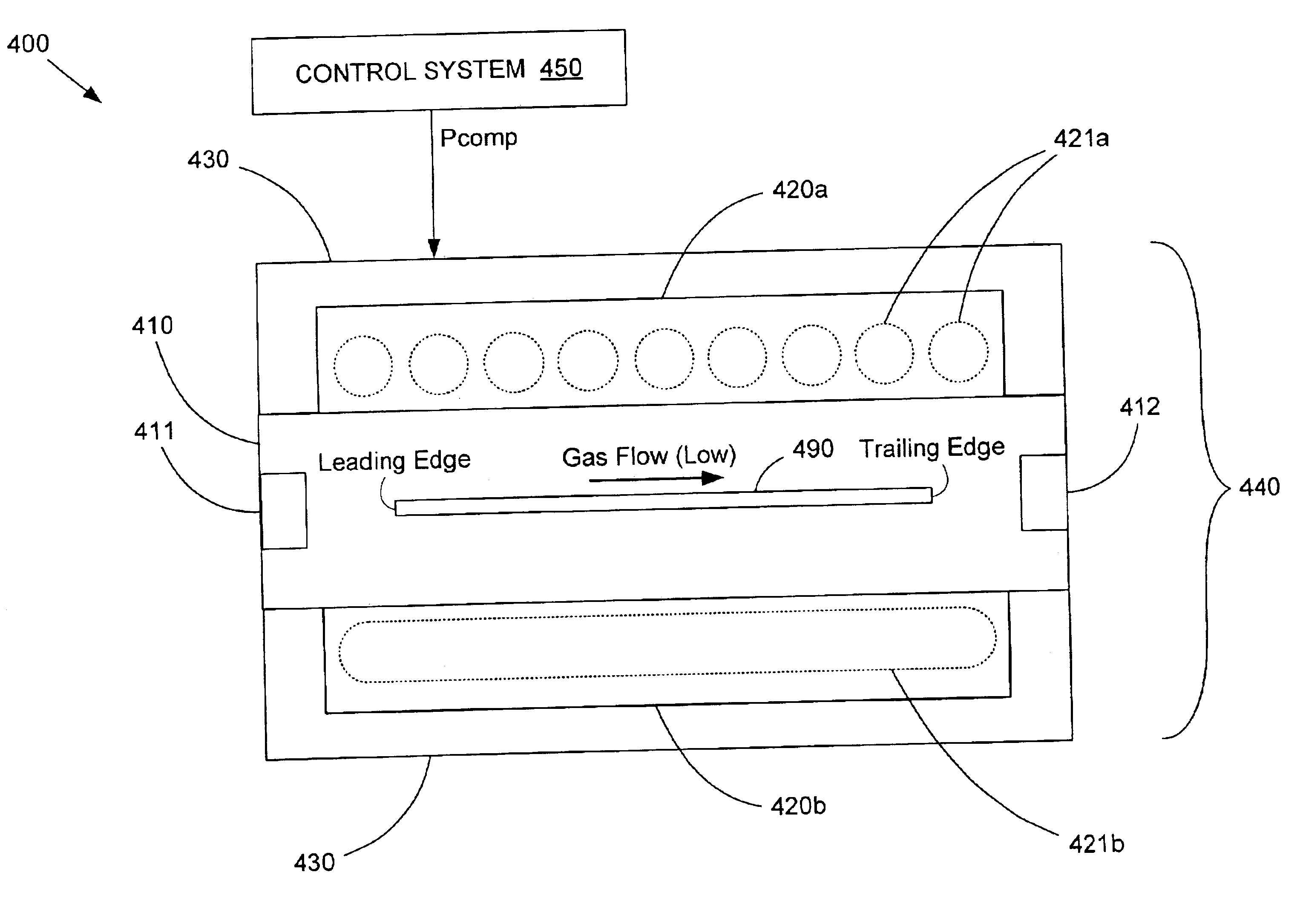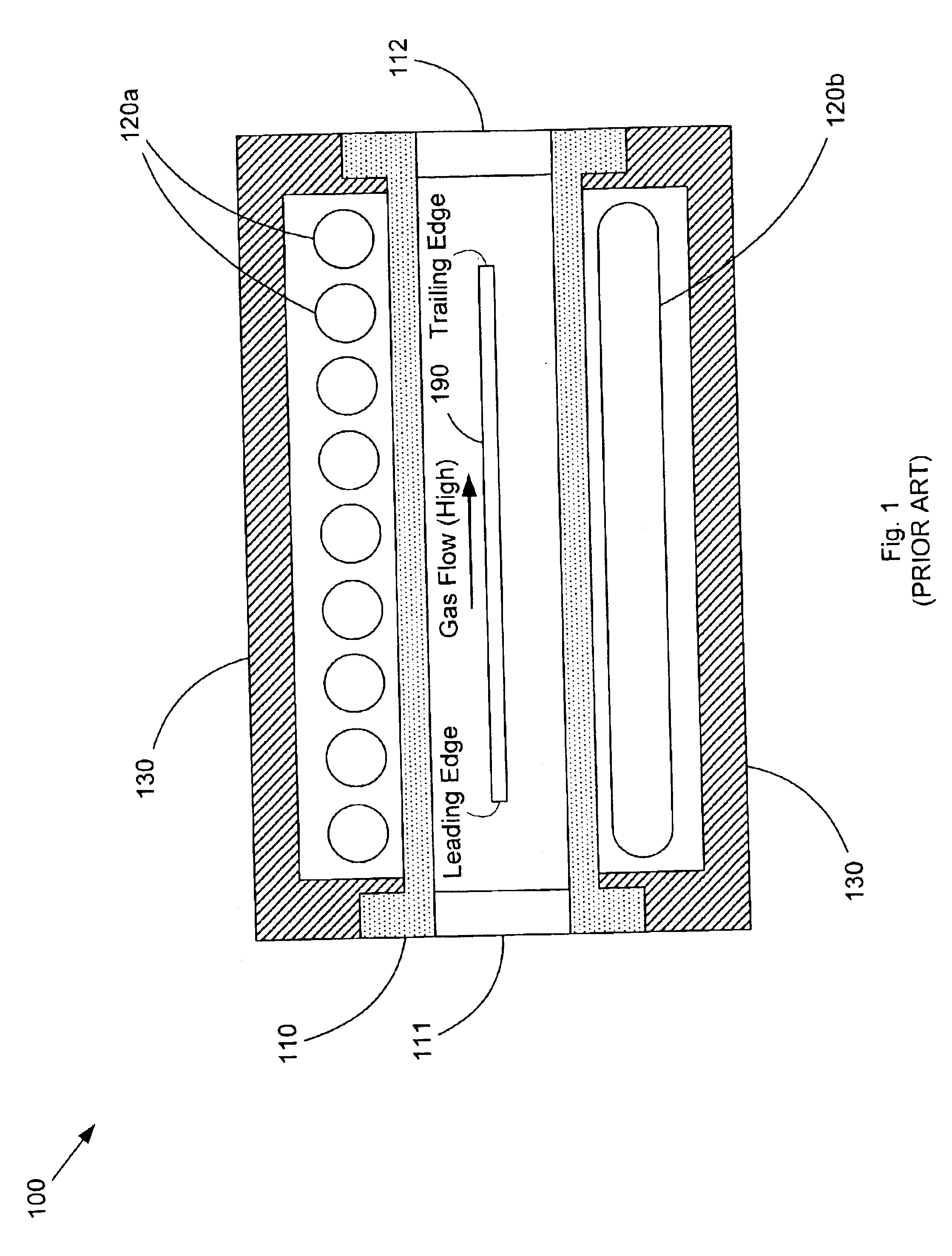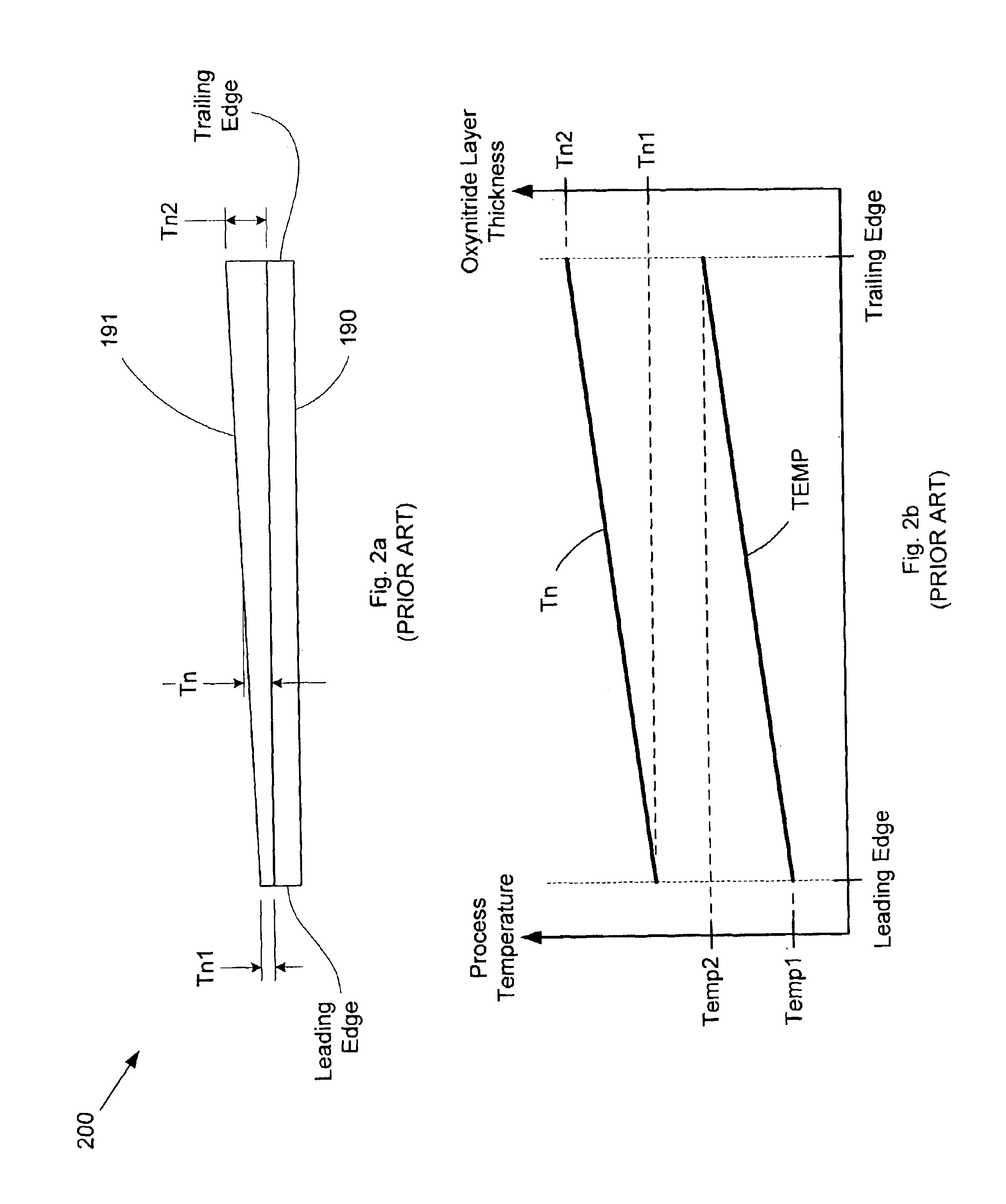Nitrogen implementation to minimize device variation
a technology of nitrogen and device variation, applied in the field of semiconductor processing, can solve the problems of reducing yield, oxynitride layer thickness, and unsatisfactory reduction of transistor threshold voltage (vt), and achieve the effect of constant threshold voltage characteristics
- Summary
- Abstract
- Description
- Claims
- Application Information
AI Technical Summary
Benefits of technology
Problems solved by technology
Method used
Image
Examples
Embodiment Construction
The invention provides a method for ensuring consistent PMOS transistor performance across a processed wafer when an RTN process is used in the formation of the PMOS transistor gate dielectrics. By introducing a nitrogen concentration gradient into the oxynitride layer formed during the RTN process, effects on threshold voltage caused by a thickness gradient in the oxynitride layer can be minimized. FIG. 4 shows an RTN system 400 configured to create a nitrogen concentration gradient in an oxynitride layer. RTN system 400 comprises a control system 450 that provides a PMOS compensation recipe Pcomp to an RTN process chamber 440. RTN process chamber 440 comprises a quartz isolation tube 410 that includes a gas inlet port 411 and a gas outlet port 412. RTN process chamber 440 further includes heat sources 420a and 420b, which can comprise any means for heating a semiconductor (e.g., silicon) wafer 490 in isolation tube 410. For example, optional tungsten halogen lamps 421a and 421b ca...
PUM
 Login to View More
Login to View More Abstract
Description
Claims
Application Information
 Login to View More
Login to View More - R&D
- Intellectual Property
- Life Sciences
- Materials
- Tech Scout
- Unparalleled Data Quality
- Higher Quality Content
- 60% Fewer Hallucinations
Browse by: Latest US Patents, China's latest patents, Technical Efficacy Thesaurus, Application Domain, Technology Topic, Popular Technical Reports.
© 2025 PatSnap. All rights reserved.Legal|Privacy policy|Modern Slavery Act Transparency Statement|Sitemap|About US| Contact US: help@patsnap.com



